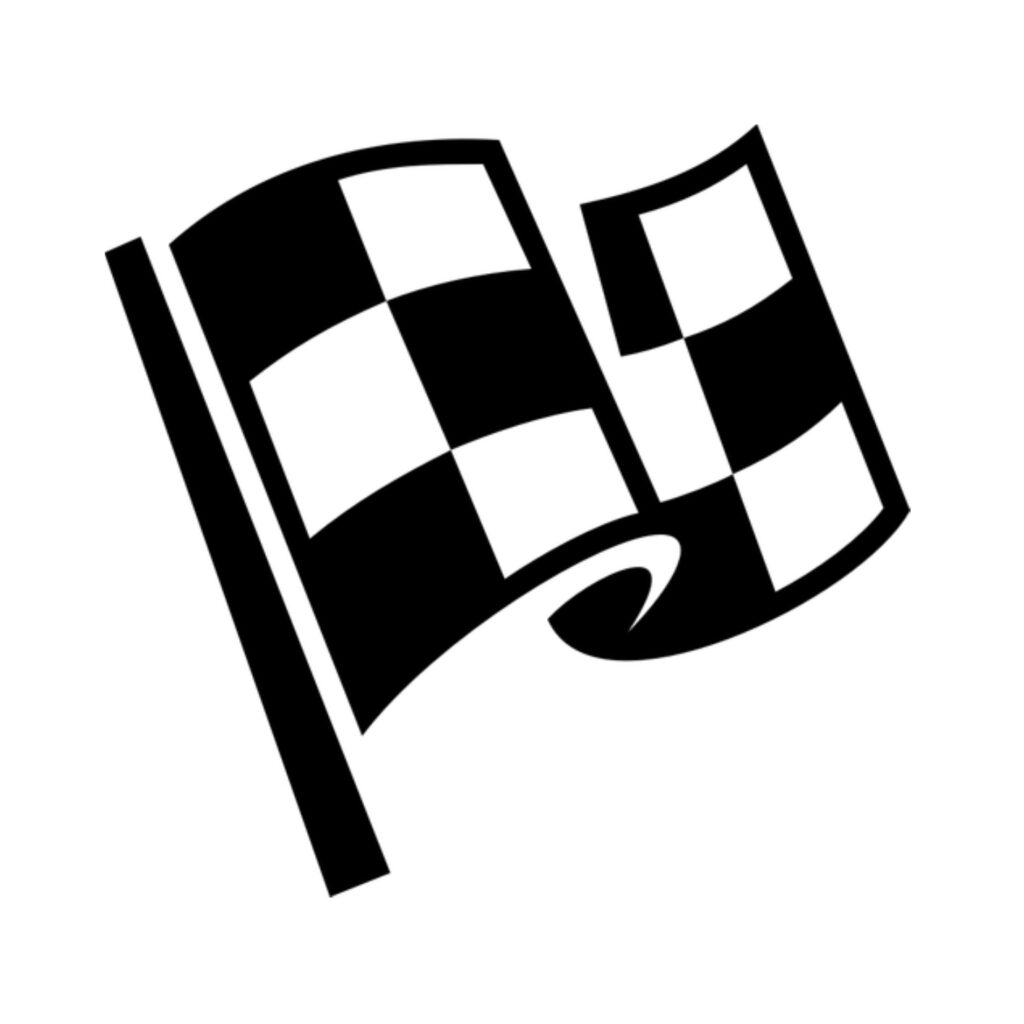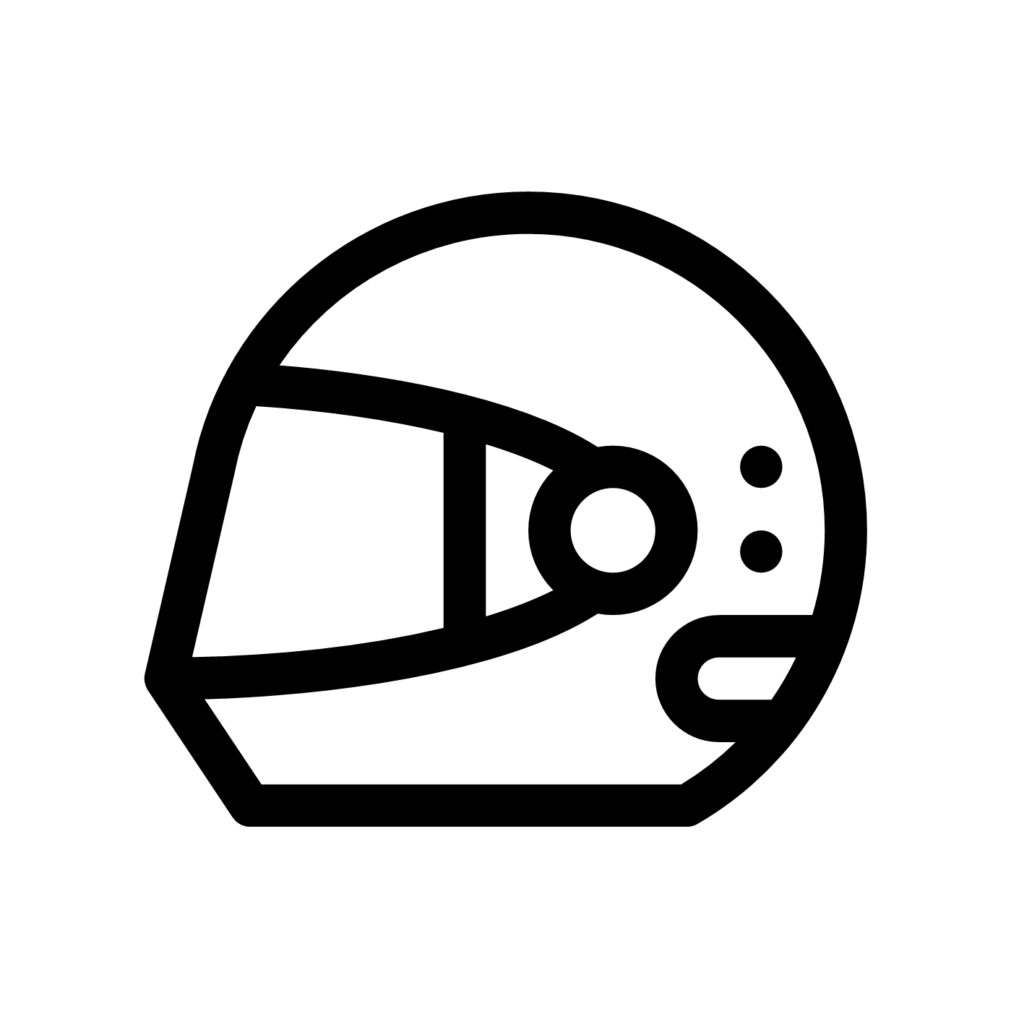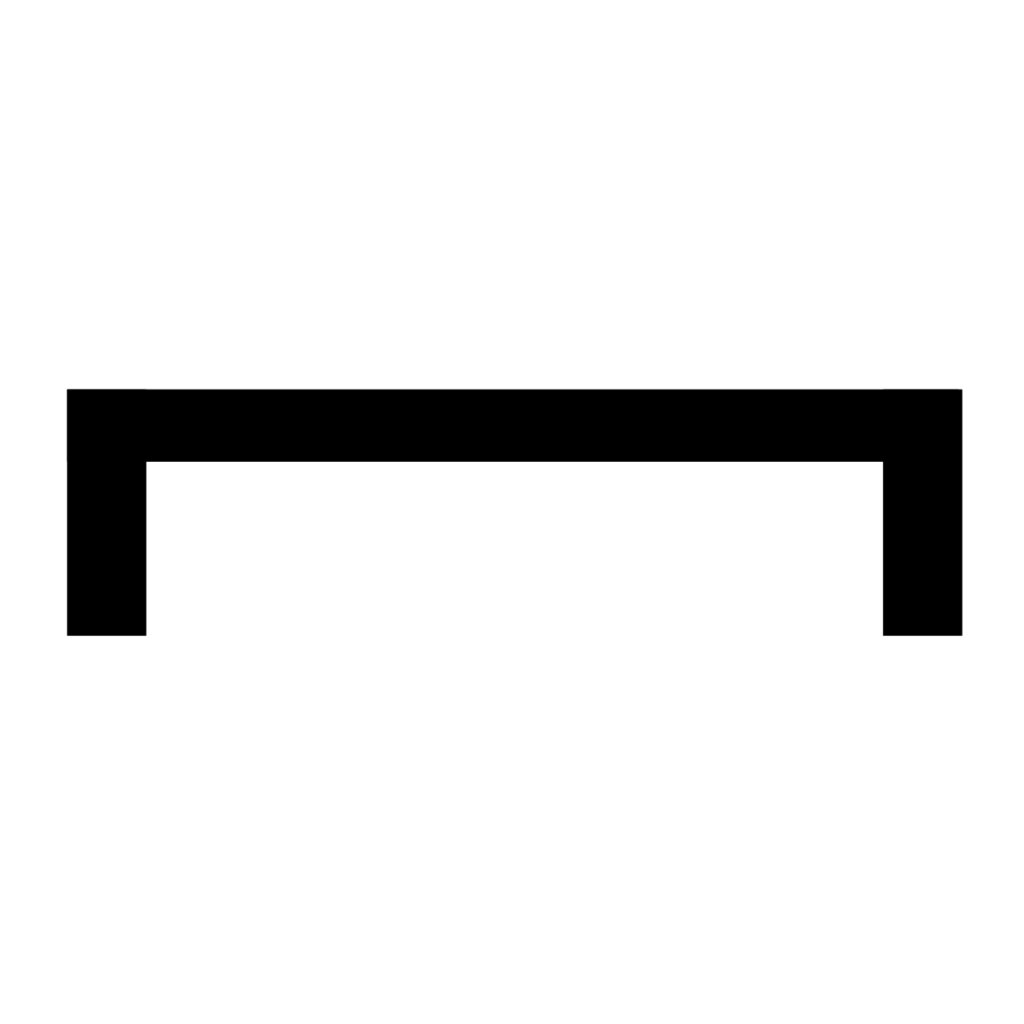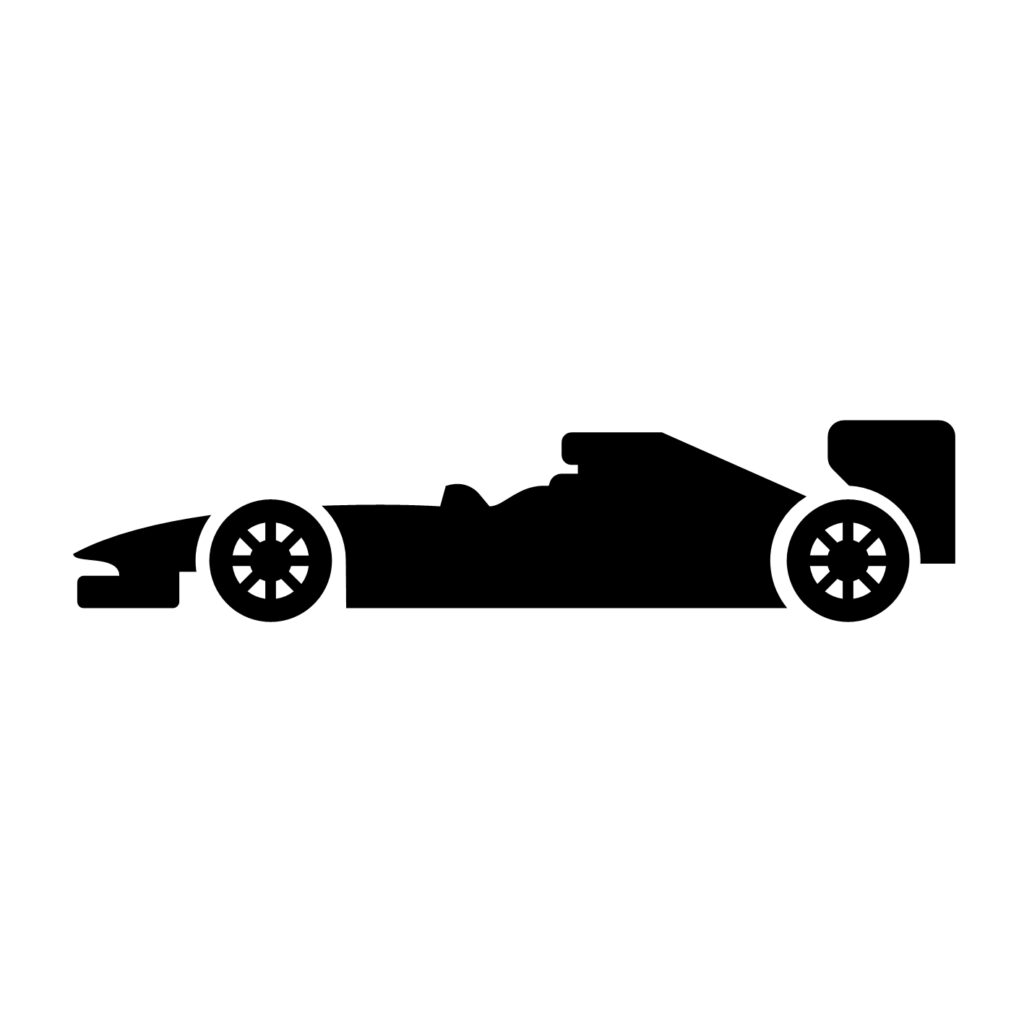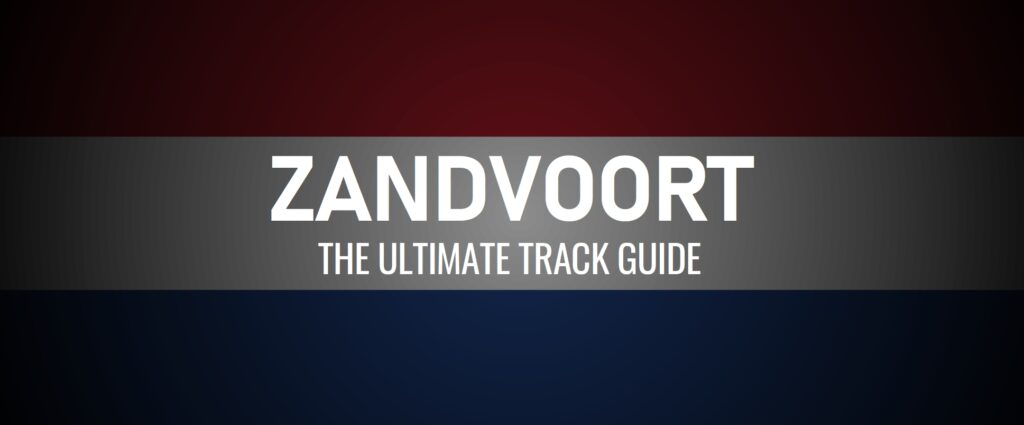
With Verstappen fever reaching an all-time high, Zandvoort returned as the host of the Dutch Grand Prix in 2021 after a 36-year absence from the Formula 1 calendar.
| FIRST F1 RACE | 1952 |
| TRACK LENGTH | 2.646 miles |
| NUMBER OF LAPS | 72 |
| NUMBER OF TURNS | 14 |
| MOST POLES | Rene Arnoux, Max Verstappen (3) |
| MOST WINS | Jim Clark (4) |
Unusually located for a racing circuit, Circuit Zandvoort can be found to the east of Amsterdam, next to the North Sea, in the sand dunes of the seaside town of Zandvoort. The town of Zandvoort hosted street racing prior to the start of World War II, with a number of minor street races taking place on the streets of the coastal town in 1939 – the first being on June 3, 1939.
The onset of war prevented racing from taking place for around ten years, though tentative plans for a permanent racing circuit had already been drawn up. Following the German invasion of the Netherlands in World War II, the Germans had constructed roads through the sand dunes. After the war, these roads were widened and linked together. The Royal Dutch Motorcycle Association sought advice from Sammy Davis – winner of the 1927 24 Hours of Le Mans – and together designed the Zandvoort circuit.
John Hugenholtz – the designer of the Suzuka circuit in Japan – is often wrongly attributed as designing the track. Hugenholtz did have ties to the track, however, acting as circuit director from 1949 to 1974.
Zandvoort joins the Grand Prix calendar
The Zandvoort track opened its doors for the first time on August 7 1948. The circuit hosted the first so-called ‘Zandvoort Grand Prix’ in 1949, which was won by Prince Bira, before staging the inaugural Dutch Grand Prix in 1950. Both this edition and the 1951 Dutch Grand Prix were won by Louis Rosier. Neither were run as rounds of the World Championship. Instead, Zandvoort first appeared on the Formula 1 calendar in 1952.
Between 1952 and 1985, there were only a handful of occasions on which the Dutch Grand Prix was not staged. The 1954 race was cancelled due to a lack of funding. Somewhat surprisingly, the 1955 Dutch Grand Prix did take place, it did so just a week after the Le Mans disaster – to some backlash at the time. The race was cancelled in both 1956 and 1957 – according to some sources, as a result of the Le Mans disaster, others blame a lack of money indirectly caused by the Suez Crisis.
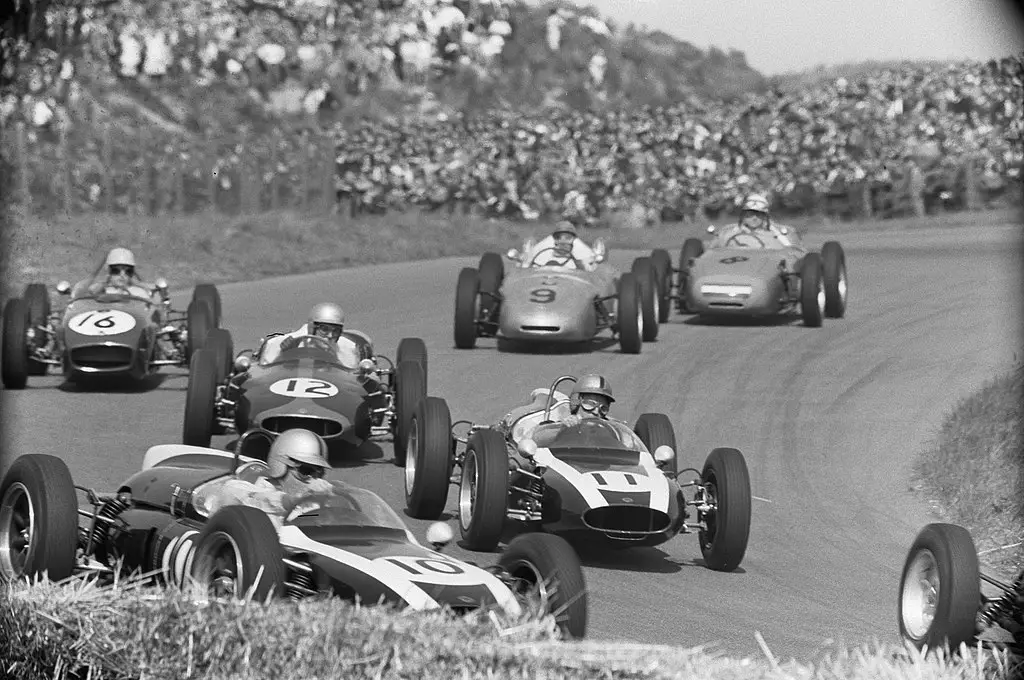
As the circuit became more established, the public roads which formed parts of the track became closed to the public. The original Zandvoort layout was well-loved by drivers, for its tight, twisting and demanding nature. Iconic corners such as the opening Tarzan turn and the famous Bos Uit right-hander were regarded among the best corners of any contemporary race circuit.
Tragedy strikes at Zandvoort
The 1960 Dutch Grand Prix was overshadowed by the death of a spectator, who had been killed as a result of a crash for Dan Gurney, whilst standing in a prohibited area. Ten years later, tragedy struck again at Zandvoort. This time, popular British driver Piers Courage was killed when his car left the circuit, somersaulting and exploding as a result of broken suspension.
Despite Courage’s death, no changes were made to the circuit in the following season. The 1971 Dutch Grand Prix was the last Formula 1 race to take place on a track which had no safety features. Due to safety concerns, the track was removed from the calendar in 1972 but returned in 1973 with a modified layout and added safety barriers. A chicane was introduced to help slow the cars at the high speed Bos Uit turn and a new pit complex was built to bring the track up to modern standards.
Despite the changes, tragedy struck again. On Lap 8 of the 1973 Dutch Grand Prix, Roger Williamson crashed and his car caught fire. The British driver was uninjured in the crash, but was unable to free himself from the burning wreckage. Appalling scenes played out on live television, as ill-equipped and ill-prepared marshals were unable to help extract the driver from his car. David Purley stopped alongside the car in a vain attempt to save his fellow countryman from the flames. Shockingly, the race was not stopped. Williamson succumbed to asphyxiation.
On a weekend that was supposed to show off Zandvoort’s new facilities and increased safety standards, the events of the 1973 Dutch Grand Prix tarnished Zandvoort’s reputation.
The end of Zandvoort’s first stint on the F1 calendar
The circuit underwent further changes in the name of safety over the following decade. By the 1980s, money was running thin and the circuit faced a number of calls to be sold off. One such instance saw the circuit under threat from property developers, who wished to turn the land into a holiday resort.
Formula 1 raced at Zandvoort for the final time in 1985, with the Dutch Grand Prix being replaced by the Hungarian Grand Prix on the following season’s schedule. Plans to sell part of the land on which the circuit sat were approved that year and the circuit was shortened as a result. Work finished on the new layout two years later, by which time the circuit was declared bankrupt. The bankruptcy and a change of owner meant that building work did not begin until 1989.
A proving ground for young drivers
The Masters of F3 event became the biggest annual event at Zandvoort throughout the 1990s and into the 2000s. The circuit became a proving ground for young talent, with the A1 Grand Prix series racing here in three of its four seasons, DTM making frequent visits and Formula 3 and Masters of F3 introducing up and coming drivers.
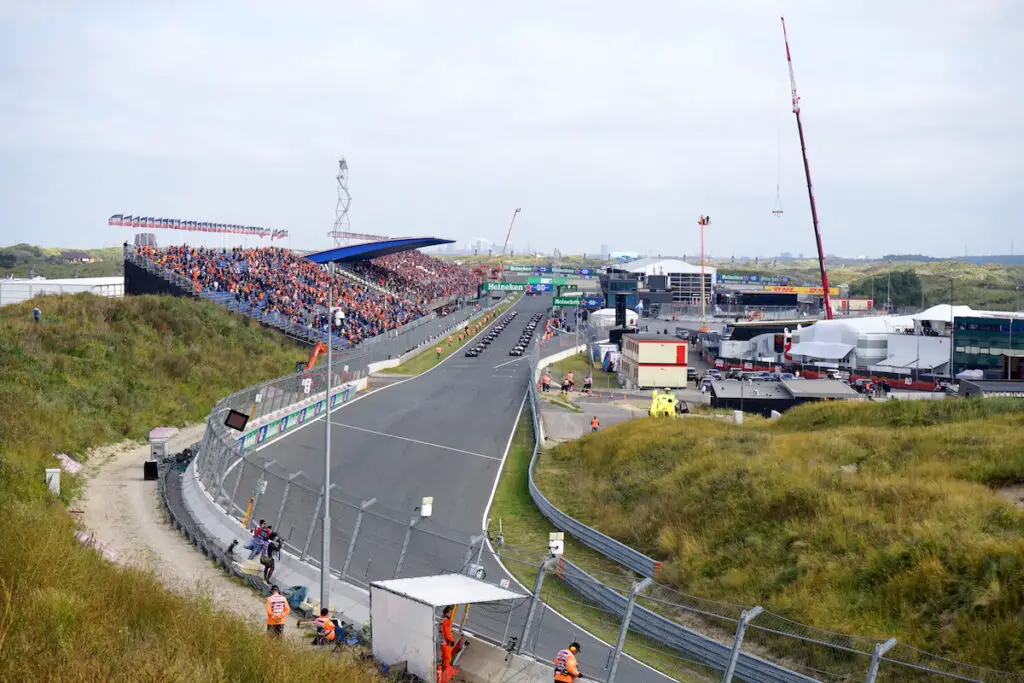
David Coulthard, Jos Verstappen, Lewis Hamilton, Nico Hulkenberg, Valtteri Bottas and Max Verstappen are all among the future stars who took junior victories at Zandvoort. The Masters of F3 event was discontinued in 2016.
The draw of junior categories gave circuit bosses some budget to play with and by the end of the 1990s, the track had been upgraded and extended. The revised circuit opened in 2001.
Verstappen-mania leads to return of Zandvoort in F1
Until 2016, Jos Verstappen – two time podium finisher – was the Netherlands’ best racing export in Formula 1. That changed as his son, Max Verstappen, impressed in his maiden season with Toro Rosso in 2015 and went on to win on his Red Bull debut at the 2016 Spanish Grand Prix, becoming the sport’s youngest ever winner.
With Dutch interest in Formula 1 rising in a similar trajectory to Verstappen’s stardom, the Dutch contingent began to make their voices heard at races across Europe, with many Dutch fans flocking to circuits on the continent and boosting attendance figures.
It was not long before the return of the Dutch Grand Prix began to be discussed. After much speculation, the event’s return was finally confirmed in May 2019. The comeback race was scheduled to take place in May 2020 with over a million fans applying for tickets.
The track was revamped ahead of its return, with facilities upgraded and a number of changes made to the circuit. An investment of €4 million was made to bring the track up to F1 standards. The layout of the circuit was not changed, but banking was added to Turns 3 and 14.
The coronavirus pandemic meant that the return of the Dutch Grand Prix at Zandvoort was delayed by a year. Zandvoort finally re-appeared on the calendar in September 2021, 36 years after it had last hosted a World Championship event.
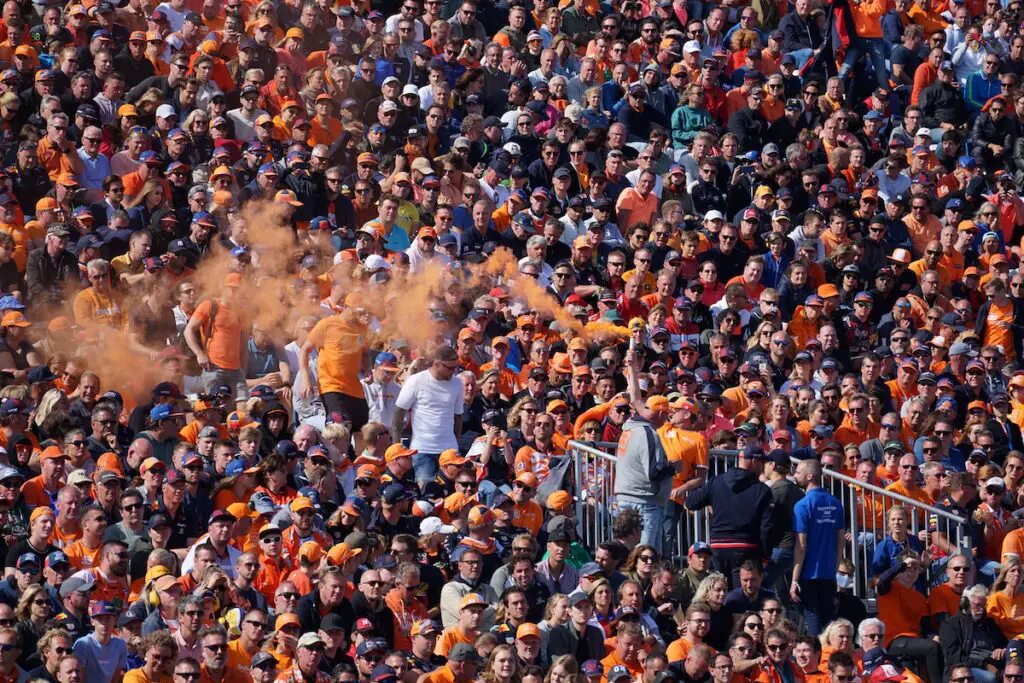
Max Verstappen won the Dutch Grand Prix in 2021, 2022 and 2023, with attendance figures soaring past 300,000 in the latter two years. The 2021 race had been run at two thirds capacity due to coronavirus pandemic related restrictions.
Although the circuit’s owners have a lease on the land until at least 2041, in December 2024 it was announced that the Dutch Grand Prix will depart the Formula 1 calendar after the 2026 season.
ZANDVOORT: FAST FACTS
- Excluding the Indianapolis 500, the 1969 and 1970 Dutch Grands Prix are the only World Championship Formula 1 races to be held at the same circuit on the same date in successive years.
- Pedro Rodriguez scored his final podium finish in Formula 1 at the 1971 Dutch Grand Prix. It was the last time that a Mexican driver would stand on the F1 podium until Sergio Perez did so 41 years later, at the 2012 Malaysian Grand Prix.
- Jackie Stewart recorded his 26th Grand Prix victory at the 1973 Dutch Grand Prix, seeing him overtake Jim Clark as the driver to have won the most races in Formula 1.
- James Hunt took the first victory of his Formula 1 career at the 1975 Dutch Grand Prix. He did so on his birthday. It was the first time any driver had won on their birthday and remains one of only two occasions on which it has happened.
- Mario Andretti’s victory at the 1978 Dutch Grand Prix remains the final occasion on which an American driver has won a Grand Prix. It was also the final 1-2 finish for Lotus in Formula 1.
- Niki Lauda took an unwanted record at the 1979 Dutch Grand Prix, becoming the first driver to record retirements at nine successive Grands Prix.
- The 1985 Dutch Grand Prix would be Stefan Bellof’s final F1 appearance. He was killed one week later in the 1000km of Spa race.
- While John Hugenholtz is sometimes wrongly attributed as the designer of the Zandvoort circuit, the track’s sweeping bends are believed to be a major inspiration for the Suzuka circuit, which Hugenholtz designed in the early 1960s.
- David Purley was awarded the prestigious George Medal for his actions in trying to save Roger Williamson’s life in the 1973 Dutch Grand Prix.
- With over 36 years between the 1985 and 2021 Dutch Grands Prix, Zandvoort has the second longest gap between two World Championship races.
LEARN MORE ABOUT ZANDVOORT
2024 DUTCH GRAND PRIX RECAP
Norris secured the second victory of his career at the 2024 Dutch Grand Prix as Verstappen failed to win on home soil for the first time.
A huge crash in a wet Free Practice 3 meant that Logan Sargeant was unable to take part in qualifying for the 2024 Dutch Grand Prix. The worst of the weather had passed before the qualifying hour began, but there were still some surprise exits in Q2, with Carlos Sainz and Lewis Hamilton failing to reach the top ten shootout.
Lando Norris secured pole position but home hero Max Verstappen powered ahead from his front row start on the run to Turn 1. While Sainz and Hamilton went about making up places from their lowly starting places, Verstappen began to complain of worn tyres on Lap 17 as Norris closed in on the Red Bull. Norris took the lead and would only lose it again to his team-mate for a few laps during the pit stop period.
A slow stop cost George Russell – who had passed Oscar Piastri on Lap 1 to run third – valuable time, allowing Charles Leclerc to move ahead. Piastri then passed Russell for fourth on Lap 40. Later on that lap, a five-car brawl developed in the midfield, with Pierre Gasly eventually ending up at the head of it in tenth place.
Russell made a second pit stop on Lap 55, which dropped him two positions that he would not make back up before the chequered flag. Norris claimed a comfortable win, with a near-23 second advantage over Verstappen. Leclerc held on to third place, with Piastri just two seconds further back.
2023 DUTCH GRAND PRIX RECAP
Verstappen equalled Vettel’s consecutive F1 record with another home victory in an exciting, wet 2023 Dutch Grand Prix.
Oscar Piastri crashed out in Free Practice 2 at the 2023 Dutch Grand Prix before Daniel Ricciardo crashed at the same corner just moments later. In the impact, Ricciardo broke bones in his hand and was forced to sit out the rest of the weekend. F1 debutant Liam Lawson took his AlphaTauri seat for the rest of the weekend.
Rain fell ahead of final practice on Saturday morning, leading to plenty of offs. Both Kevin Magnussen and Zhou Guanyu span out in the wet session, while Lawson also made contact with the barriers on his first appearance.
It was still damp when qualifying began at Zandvoort, which helped Williams record their first double Q3 appearance in six years. Lewis Hamilton exited in Q2, while both Logan Sargeant and Charles Leclerc crashed out in Q3. Max Verstappen secured a third consecutive home pole, with Lando Norris his closest competitor, while Alex Albon qualified an impressive fourth.
As Sunday’s race began, rain began to fall trackside at Zandvoort. Verstappen maintained his lead ahead of Norris but the rain began falling more heavily before the drivers reached the final sector on the opening lap. Albon came out on top in a side-by-side battle with Ferrari’s Carlos Sainz, while seven drivers pitted at the end of the lap – including Sergio Perez and Charles Leclerc.
With the weather worsening, Verstappen and Fernando Alonso were next of the frontrunners to pit at the end of Lap 2, while Lando Norris and George Russell stayed out on their slick tyres. Russell passed Norris for the lead at Turn 1 as Perez closed in on the leaders, the Red Bull easing into the lead on Lap 3. Verstappen made it a Red Bull 1-2 with an overtake on Zhou Guanyu on Lap 7.
More rain was expected but the weather had dried sufficiently for some drivers to make the switch back to slicks. Verstappen made the switch on Lap 12, with Perez following him in on the next lap. Verstappen gained enough time on his out lap to take the lead of the race.
On Lap 16, Sargeant crashed for the second time in two days leading to the Safety Car being deployed. The restart and the next 30 or so laps passed with little in the way of incident, aside from an exciting battle between Alonso and Sainz over third place, while debutant Lawson pulled an overtake on Leclerc. The Ferrari driver later retired.
With just over ten laps to go, the predicted heavy rain arrived. Verstappen made an early call for intermediates with Alonso following him in. Perez brought out the yellow flags as he ran off road at Turn 1, with Zhou Guanyu crashing at the same corner just moments later. With cars beginning to aquaplane, the Virtual Safety Car was called before the race was red-flagged.
The race resumed on Lap 66 with all drivers on intermediate tyres, where Alonso hunted down Verstappen in the lead. The Spaniard could not make his way by, with Verstappen winning his home race for the third year in a row.
A five second penalty for Perez for speeding in the pit lane meant that his third place was under pressure from Alpine’s Pierre Gasly. The Frenchman stayed close enough to the Red Bull to secure the final podium position.
Verstappen secured his ninth consecutive victory, equalling Sebastian Vettel’s record of the most successive wins in Formula 1 history.
2022 DUTCH GRAND PRIX RECAP
Verstappen delighted his home fans for a second year in succession, taking a second consecutive victory at the Dutch Grand Prix – despite pressure from the Mercedes drivers.
Max Verstappen’s home race weekend didn’t get off to the best of starts as he came to a stop in Free Practice 1 with gearbox issues. He soon recovered from the setback and set the fastest time in qualifying to secure pole position for the Dutch Grand Prix for the second season in succession. The qualifying hour was interrupted twice by smoke flares being thrown onto the circuit.
A spin for Sergio Perez at the end of Q3 prevented some drivers from setting faster times. The Mexican qualified only fifth, with Charles Leclerc, Carlos Sainz and Lewis Hamilton between him and his Red Bull team-mate on the grid.
Verstappen led away at the start, while there was light contact at Turn 1 between Hamilton and Sainz. On Lap 2, Kevin Magnussen oversteered into the barriers but was able to keep going – albeit having lost a handful of positions.
Sainz was first of the frontrunners to pit and he endured a long stop. Perez followed him into the pits, with the Red Bull driver running over some equipment left by Ferrari in the pit lane. At the race’s halfway point, Hamilton went side by side with Perez on the hunt for a rare victory in 2022. Hamilton eventually passed for third place as he began his pursuit of Verstappen and Leclerc ahead.
Yuki Tsunoda had a bizarre incident in which he felt his tyres were not correctly fitted. He stopped at the side of the track but rejoined the race after being told the tyres were safe. He pitted again and then came to a halt on the track once more, necessitating a Safety Car.
Verstappen was able to take advantage and pitted under the Safety Car. Hamilton – who likely would have passed the Red Bull when he pitted if not for the caution period – also took the opportunity to take on fresh rubber, as did team-mate George Russell.
17 laps from the end, Valtteri Bottas came to a stop at the end of the main straight resulting in another Safety Car period. Verstappen pitted yet again, this time for soft tyres. Hamilton took the lead on track, while Russell also took on fresh tyres. Ferrari had more drama in the pit lane with Sainz penalised for an unsafe release.
At the restart, Verstappen re-passed Hamilton almost immediately. The Dutchman went on to take a second consecutive home victory, while Hamilton was passed by both his team-mate and Leclerc.
2021 DUTCH GRAND PRIX RECAP
Formula 1 returned to Zandvoort for the first Dutch Grand Prix since 1985. Max Verstappen delivered a popular home win.
For the first time in 36 years, Formula 1 was back at the seaside resort of Zandvoort for the return of the Dutch Grand Prix. In Free Practice 1, Sebastian Vettel brought out the red flags for almost forty minutes following an engine failure. On Friday afternoon, Lewis Hamilton was next to encounter engine issues.
Kimi Raikkonen was ruled out of the race weekend on Saturday morning following a positive coronavirus test. He was replaced by Robert Kubica. Both Williams drivers crashed in Q2, preventing the team from making another Q3 appearance, while – despite a crash in Free Practice 3 – Carlos Sainz was able to qualify in the top ten.
Max Verstappen secured pole position on his first home race appearance with championship nemesis Lewis Hamilton alongside on the front row. Verstappen led at the start and the leaders made their first stops around Lap 20. Despite being held up by Valtteri Bottas and allowing Hamilton to close in, Verstappen remained in a comfortable lead.
Sergio Perez, who was eliminated in Q1, provided much of the entertainment in the midfield on a fine comeback drive to eighth place. Bottas went on to take the fastest lap despite being told not to do so by his team. That saw Hamilton come in for another stop two laps from the end and steal back the additional point on his final tour of the track. Verstappen delighted the partisan crowd with the first home victory for a Dutch Grand Prix. He was joined on the podium by the two Mercedes drivers.
ZANDVOORT: POLESITTERS AND WINNERS
| Year | Polesitter | Team on Pole | Winner | Winning Team |
|---|---|---|---|---|
| 1952 | Alberto Ascari | Ferrari | Alberto Ascari | Ferrari |
| 1953 | Alberto Ascari | Ferrari | Alberto Ascari | Ferrari |
| 1955 | Juan Manuel Fangio | Mercedes | Juan Manuel Fangio | Mercedes |
| 1958 | Stuart Lewis-Evans | Vanwall | Stirling Moss | Vanwall |
| 1959 | Jo Bonnier | BRM | Jo Bonnier | BRM |
| 1960 | Stirling Moss | Lotus | Jack Brabham | Cooper |
| 1961 | Phil Hill | Ferrari | Wolfgang von Trips | Ferrari |
| 1962 | John Surtees | Lola | Graham Hill | BRM |
| 1963 | Jim Clark | Lotus | Jim Clark | Lotus |
| 1964 | Dan Gurney | Brabham | Jim Clark | Lotus |
| 1965 | Graham Hill | BRM | Jim Clark | Lotus |
| 1966 | Jack Brabham | Brabham | Jack Brabham | Brabham |
| 1967 | Graham Hill | Lotus | Jim Clark | Lotus |
| 1968 | Chris Amon | Ferrari | Jackie Stewart | Matra |
| 1969 | Jochen Rindt | Lotus | Jackie Stewart | Matra |
| 1970 | Jochen Rindt | Lotus | Jochen Rindt | Lotus |
| 1971 | Jacky Ickx | Ferrari | Jacky Ickx | Ferrari |
| 1973 | Ronnie Peterson | Lotus | Jackie Stewart | Tyrrell |
| 1974 | Niki Lauda | Ferrari | Niki Lauda | Ferrari |
| 1975 | Niki Lauda | Ferrari | James Hunt | Hesketh |
| 1976 | Ronnie Peterson | March | James Hunt | McLaren |
| 1977 | Mario Andretti | Lotus | Niki Lauda | Ferrari |
| 1978 | Mario Andretti | Lotus | Mario Andretti | Lotus |
| 1979 | Rene Arnoux | Renault | Alan Jones | Williams |
| 1980 | Rene Arnoux | Renault | Nelson Piquet | Brabham |
| 1981 | Alain Prost | Renault | Alain Prost | Renault |
| 1982 | Rene Arnoux | Renault | Didier Pironi | Ferrari |
| 1983 | Nelson Piquet | Brabham | René Arnoux | Ferrari |
| 1984 | Alain Prost | McLaren | Alain Prost | McLaren |
| 1985 | Nelson Piquet | Brabham | Niki Lauda | McLaren |
| 2021 | Max Verstappen | Red Bull | Max Verstappen | Red Bull |
| 2022 | Max Verstappen | Red Bull | Max Verstappen | Red Bull |
| 2023 | Max Verstappen | Red Bull | Max Verstappen | Red Bull |
| 2024 | Lando Norris | McLaren | Lando Norris | McLaren |
| 2025 | Oscar Piastri | McLaren | Oscar Piastri | McLaren |

